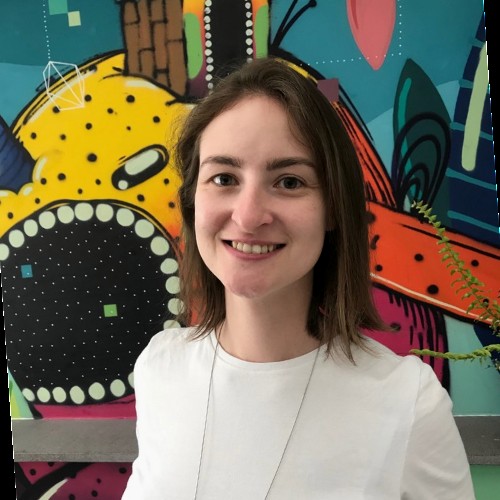But first, some background
In 2004, Osterwalder wrote a doctoral thesis entitled The Business Model Ontology – a proposition in a design science approach. The research aimed to define the very concept of Business Models, as in the context of the internet bubble of the 2000s, this term was used to try to highlight an important difference: while traditional organizations were concerned with physical presence, buildings and concrete goods (brick and mortar), internet companies were more concerned with partners, innovative customer relationships and new ways to capture value. The thesis originated his first book, Business Model Generation (2010), in which the theorist first presented the Business Model Canvas. This strategic tool is still used today to design new businesses, as it proposes a visual model that helps to think and structure values and processes. In 2014, Osterwalder also released the publication Value Proposition Design to clarify that, within the Business Model Canvas, special attention needs to be given to the Value Proposition framework, and a user-centered approach to its definition is essential. The author then proposed the Value Proposition Canvas, a tool to define personas, their pains, desires and business actions in relation to those needs. In 2019, the book Testing Business Ideas continues this anthology created by the author. He explains that, after creating the new business model, it is necessary to test and experiment – after all, what we put on the Canvas are only hypotheses. Therefore, the author presents a framework for this, and suggests 44 ideas for quick experiments.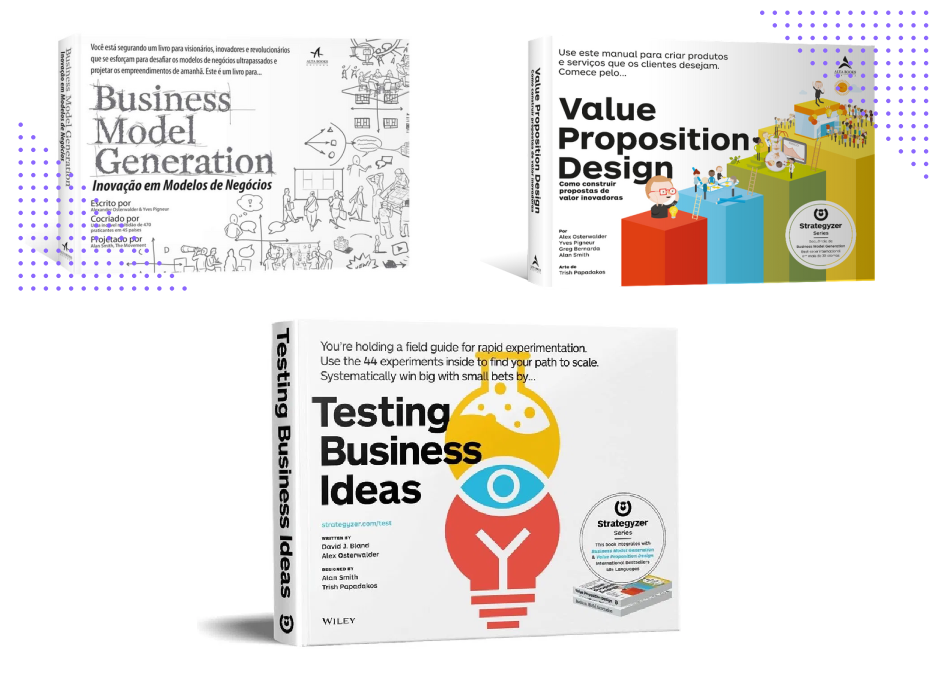
Source: Own image.
What is a Business Model?
According to Osterwalder (2004), a Business Model is a conceptual tool that contains a set of elements and their relationships, and allows the expression of an organization’s moneymaking logic. It is a description of the value a company provides to one or several customer segments; and the architecture of the company and its network of partners to create, market and deliver that value and relationship capital to generate profitable and sustainable revenue streams. This structure, which allows the creation of a more complete business proposal, is important both for thinking and planning a new business, as well as for competitive purposes. For the theorist, it is not only the products and services of an organization that make it competitive in the market: the Business Model is also decisive. In the image below, we can see the Business Model Canvas proposed by Osterwalder:
Source: Book Business Model Canvas (2004).
So we need to create a Business Plan, right?
After filling out the Canvas, it is common for many entrepreneurs to see it as a Business Plan. A well-filled Canvas can give you a false feeling that everything is defined and that you just need to execute to achieve success. However, if the business in question is innovative, a plan is useless and can even be harmful, precisely because it fosters the misconception that everything is defined. I know it is hard to believe that a plan can be useless or bad. Therefore, I would like to support this statement with two important theoretical models. The first is the Cynefin, a framework according to which innovation and plans are incompatible, because they are in different quadrants: innovation is in the quadrant of complex things, while plans are tools for the quadrant of complicated things. The second model is the Organizational Ambidexterity theory, which states that organizations need to differentiate moments of exploitation and exploration: when I “exploit”, I’m refining what I already do, making my processes more efficient and executing them masterfully; but when I “explore” new possibilities, seeking innovation, I need other methods that favor experimentation, learning and that have mechanisms to deal with risk. This means that, in creating innovative businesses, there is always a period of uncertainty – complex, exploration – and then a period of focus – complicated, exploitation. Moreover, it is in the period of uncertainty that we need to experiment.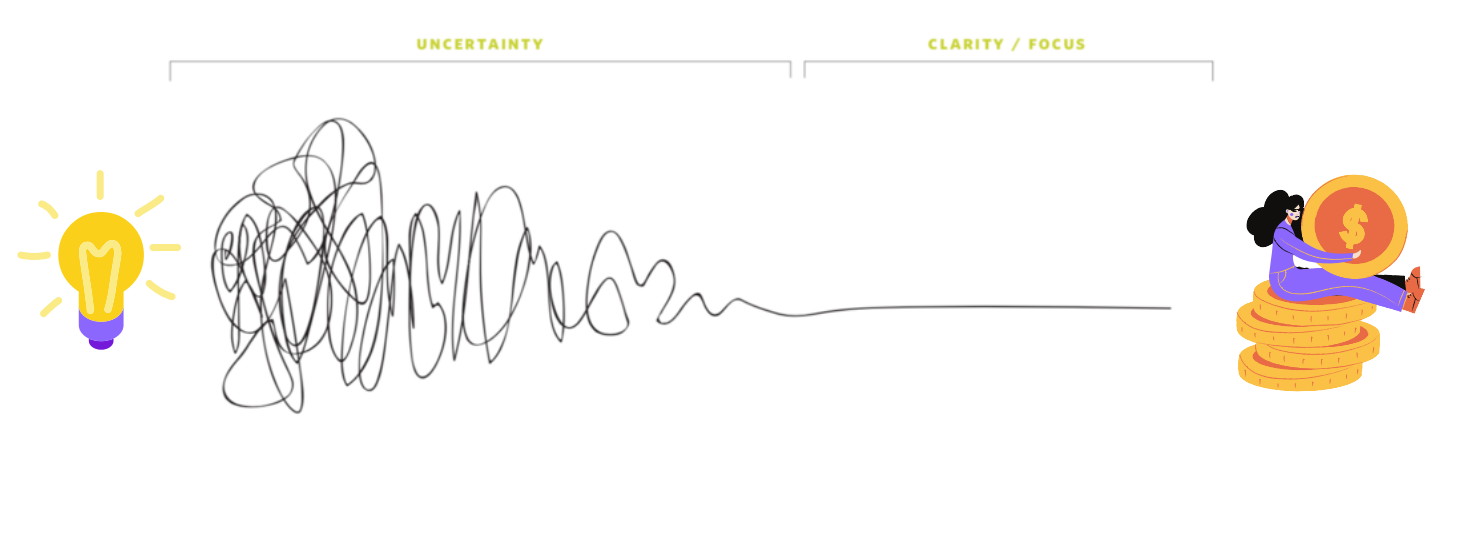
Source: Book Testing Business Ideas (2019).
How to innovate in Business Models?
If we think about the Lean Startup (2011), a model proposed by the American entrepreneur Eric Ries, the answer to this question would be through the build, measure, learn cycle, using actionable metrics. In other words, based on an idea, we build a minimal version of the product, launch it on the market, measure its results, generate data and learn from it. We repeat this cycle until we find an innovative business model. However, for Osterwalder this framework is misleading. You see, the problem is not the method itself, but the interpretation that entrepreneurs have made of it. Starting with the build creates a false feeling that the first thing to do is to build products, and in general, people tend to “build” too much, to create giant MVPs without testing hypotheses. This Lean Startup structure, as it has been applied in most businesses, can mean a waste of time and money. We may end up building a product that will not have the expected reception, and it will be necessary to pivot at a time that major investments will be in development.Experiment before you build
In the book Testing Business Ideas, Osterwalder then proposes a different framework to innovate in Business Models. Its aim is to minimize the importance of “building”, and make the relevance and meaning of “experimenting” very clear. See the image below: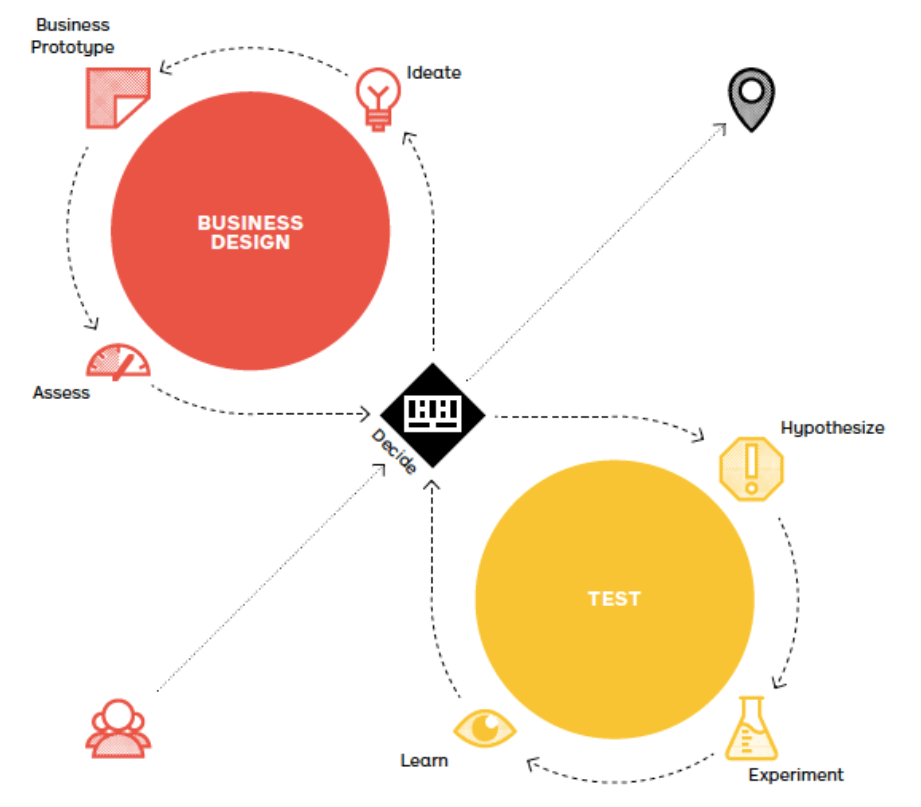
Source: Book Testing Business Ideas (2019).
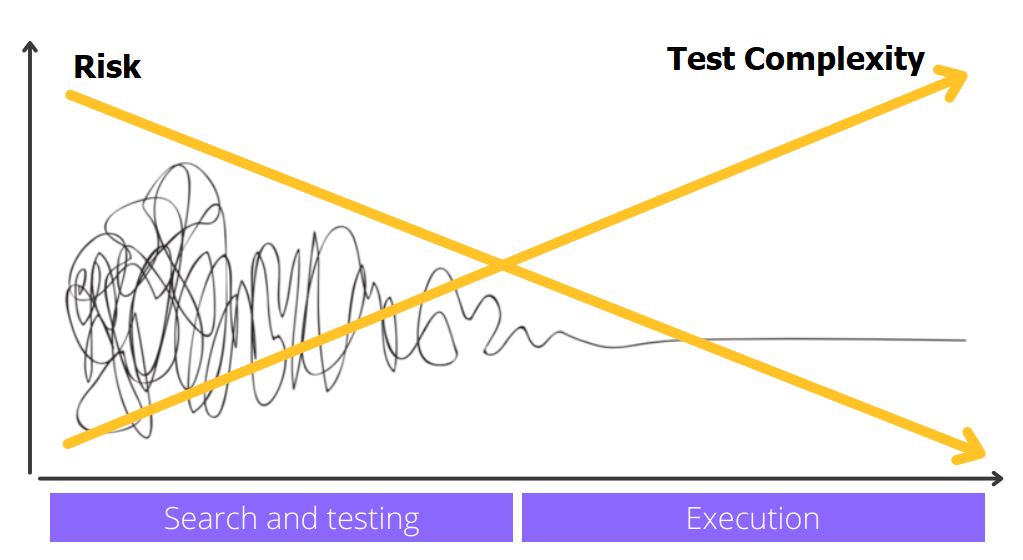
Source: Own image.
Step by step to test innovative business ideas
Based on the framework, the theorist explains the three steps to test innovative business models:- From the Business Model Canvas and the Value Proposition Canvas, identify the hypotheses that you want to test;
- Take these hypotheses to a prioritization tool that differentiates what is evident from what is not, and what is important from what is not;
- Start experimenting the hypotheses that are most important to your business and that you do not have evidence, as they have a big impact – if there are many hypotheses with such conditions, start with those “desirable”, that is, start by testing what is related to the customer’s desire.
What is a hypothesis?
Before starting the tests, it is worth remembering that hypotheses are instruments that serve to prove or disprove our assumptions. In the method that Osterwalder proposes, a hypothesis is specifically:- An assumption on which the value proposition, business model or strategy is based;
- A statement we need to learn about in order to understand whether our business idea can actually work;
- Is related to the desirability, feasibility and practicality of the business idea – It is testable (evident), its success indicator is clear, and it describes only one thing (not many).
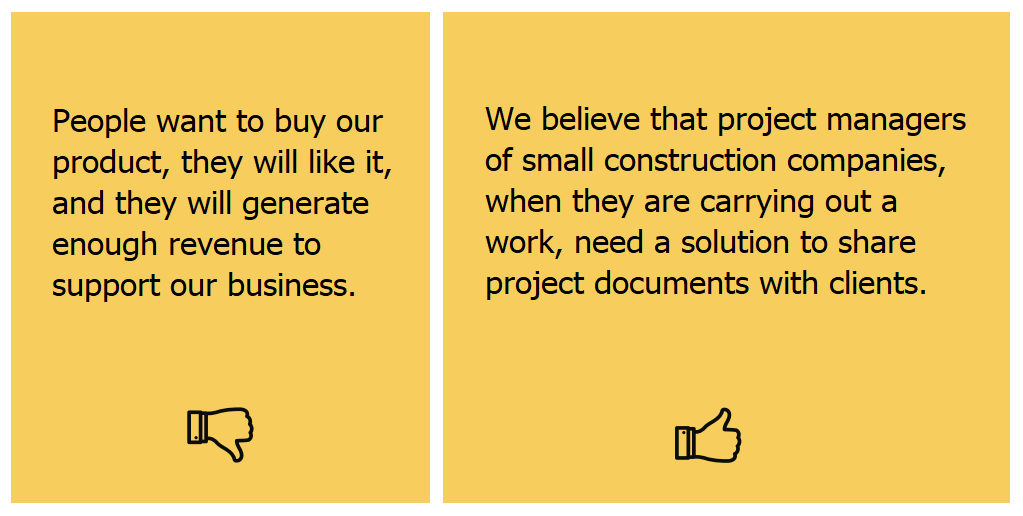
Source: Own image.
What is an experiment?
Furthermore, we also need to understand what the theorist calls an experiment in the context of this framework. An experiment is:- A procedure to reduce risk and uncertainty of a business idea;
- Produces evidence (weak, opinion, or strong, facts) that support or refute a hypothesis;
- It can be fast or slow, cheap or expensive.
The ideal setting for testing ideas
In terms of organization, the author proposes a dedicated, multifunctional team, with autonomy to define the experiments and carry them out, with access to customers and the necessary resources. To ensure that results are achieved, this team also has restrictions: regarding time, it must use the timebox concept, and regarding objectives, it must be guided by indicators, KPIs or objectives that restrict the learning universe. The suggested work process is based on the Scrum agile method, but with some differences in the ceremonies and their cadences: Weekly Planning, Daily Standup, Weekly Learning, Retrospectives every two weeks, and a Monthly Review – this last ceremony has the presence of stakeholders and is more focused on the discussion of learning, which provides a moment for decision making (continue, pivot or stop).Conclusion
The framework presented in the book Testing Business Ideas is nothing new, but it is of immense value. The idea is fully compatible with the Lean Startup philosophy and is not far from what was first proposed by Steve Blank. However, it is structured in a way that puts more emphasis on quick experimentation, and explains to us that it is better to do ten simple experiments than spend all our time building a huge “MVP” without feedback cycles on it. We can say that, after the misinterpretation of the MVP concept, which had been practiced in recent years, this framework is an encouragement for the product community and for entrepreneurs and innovators, because it recaptures what is really important: we need to reduce the risk of our ventures before committing to large investments. It is clear that performing experiments is not simple, and having professionals experienced in structuring innovative businesses can make all the difference. Therefore, if you are in need of help thinking, structuring and planning your new business, please contact us using the form below.Let’s build exceptional software solutions together!
Experience having a reliable partner to your IT challenges. Let’s talk about our unique approach to discover and deliver outstanding solutions.

